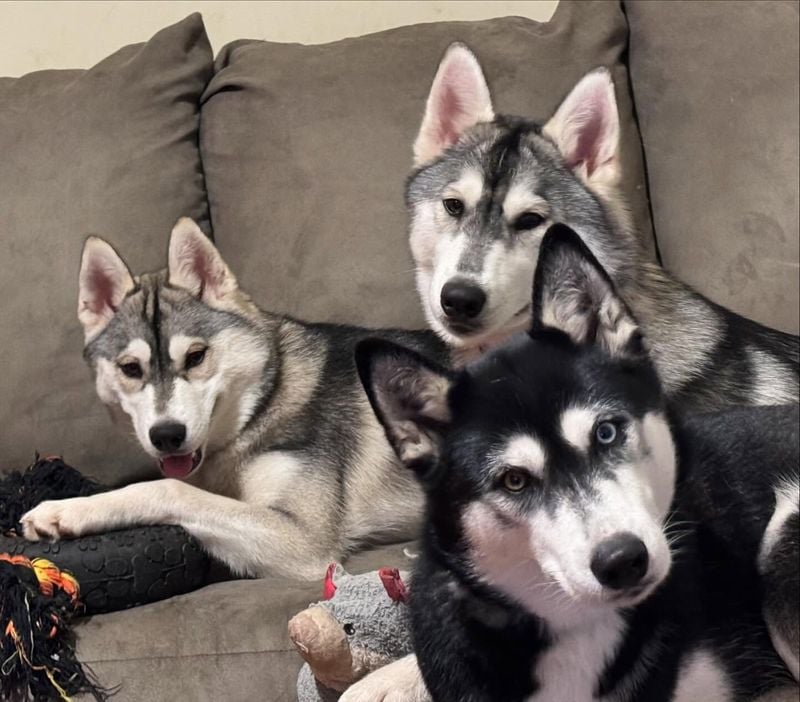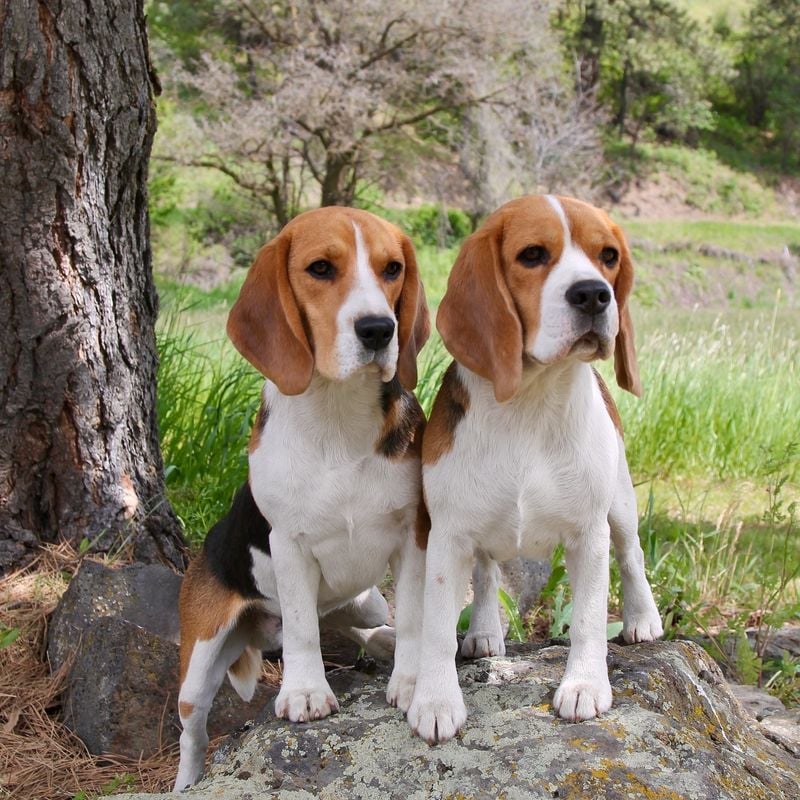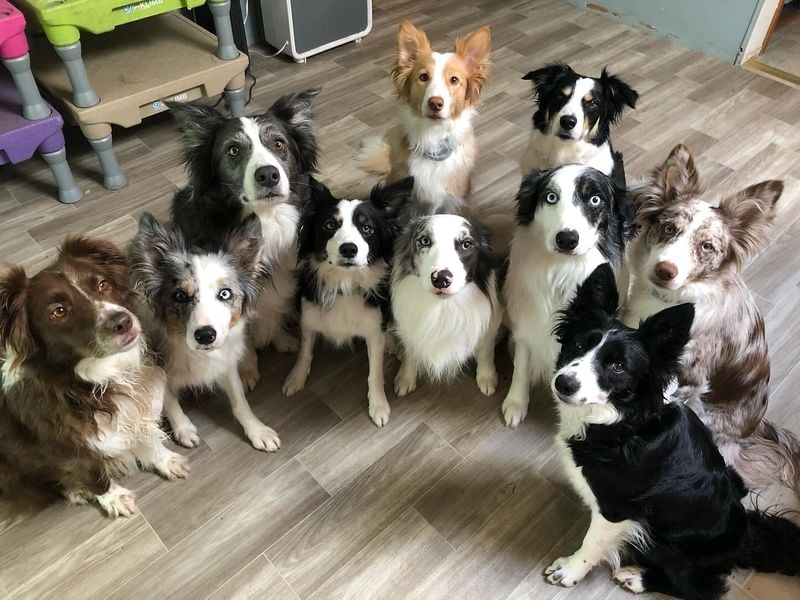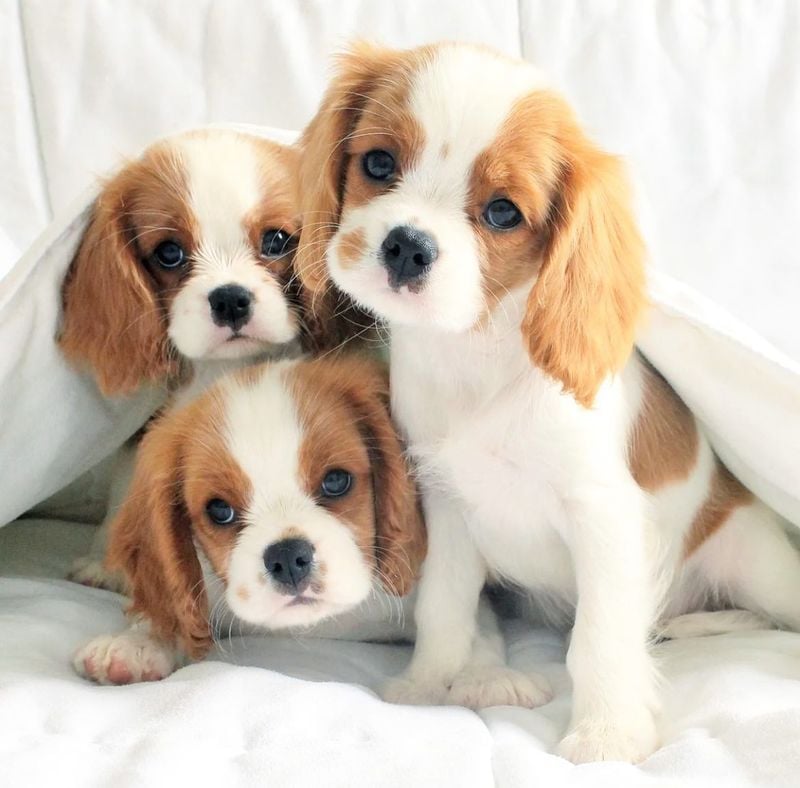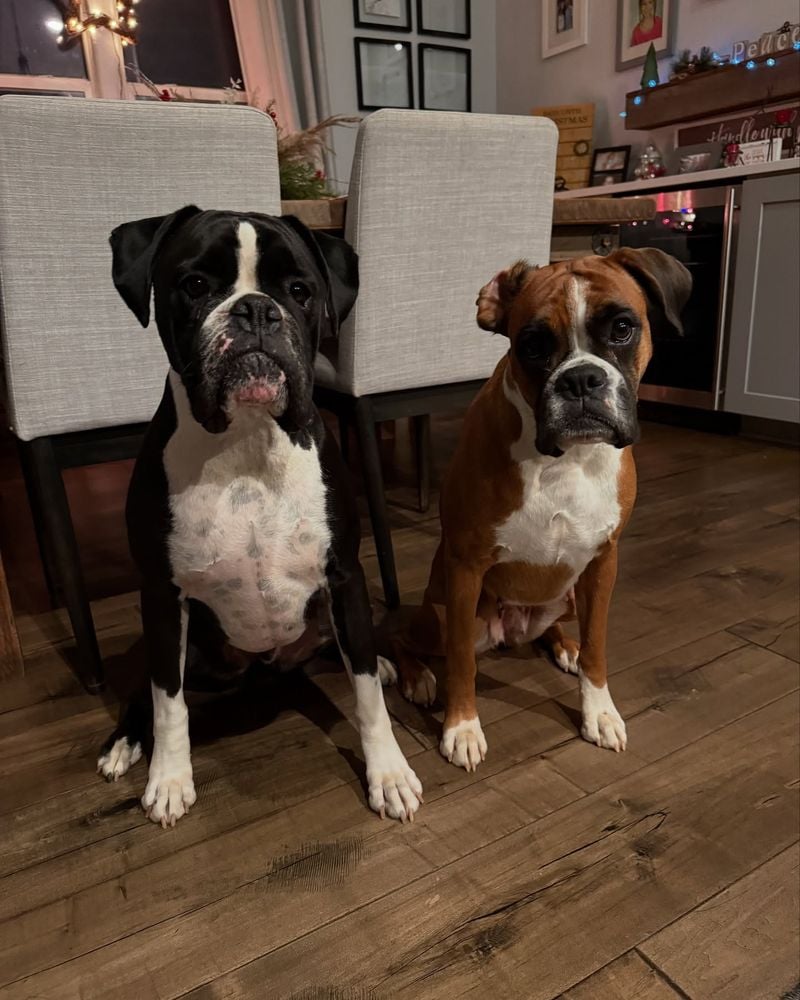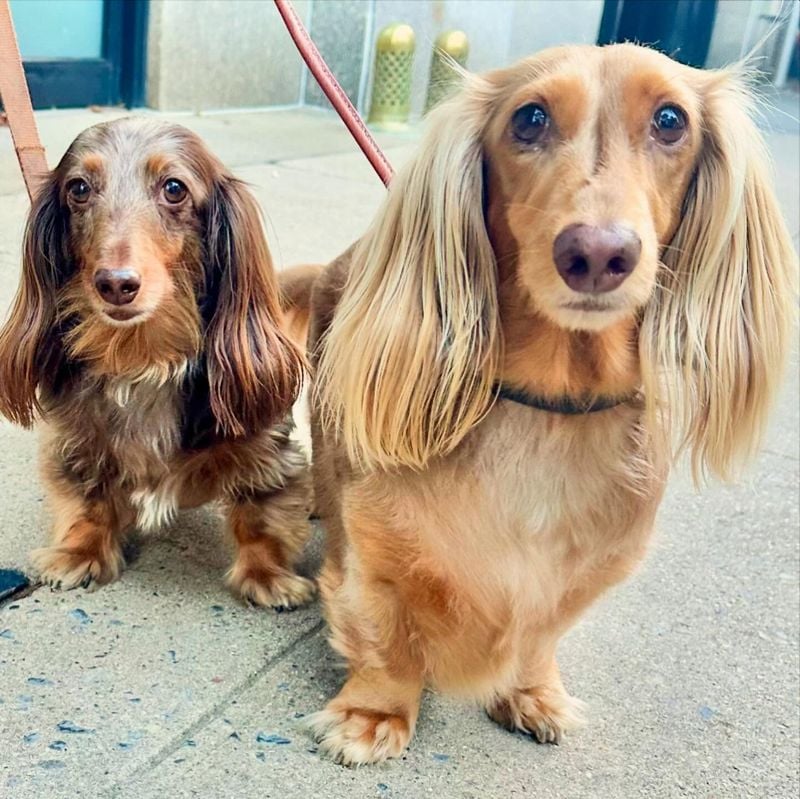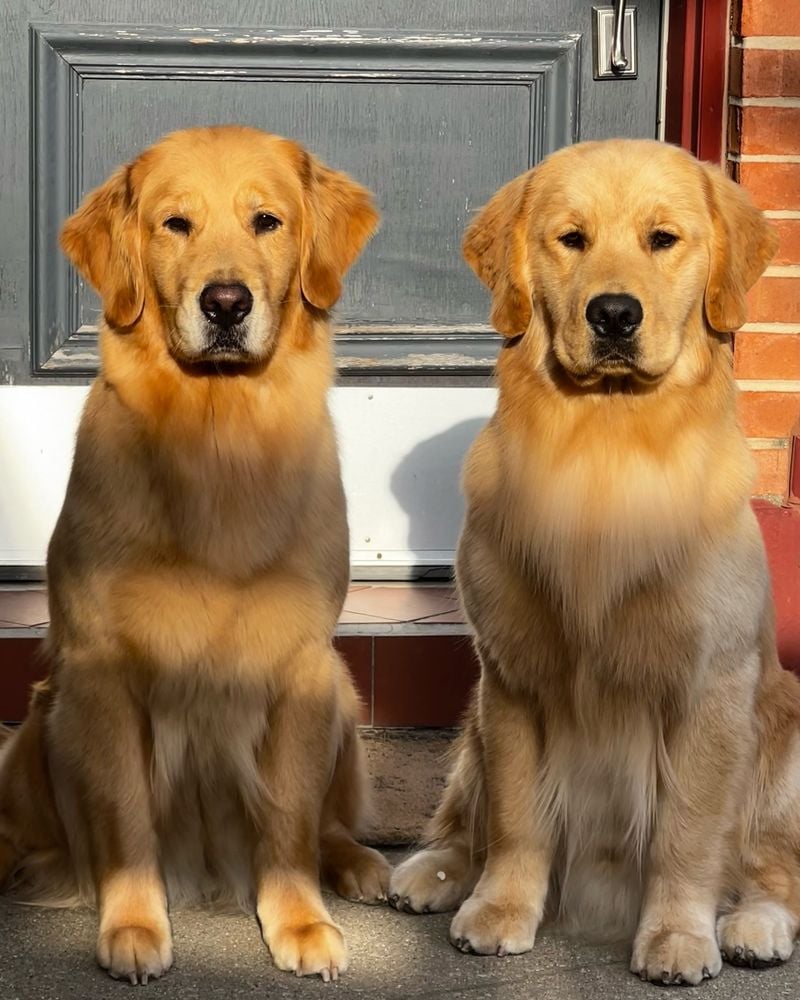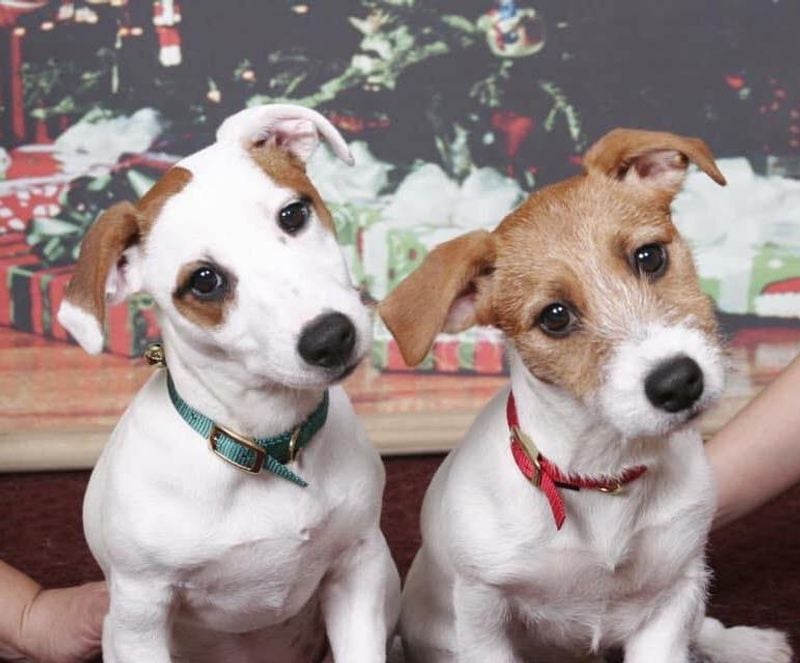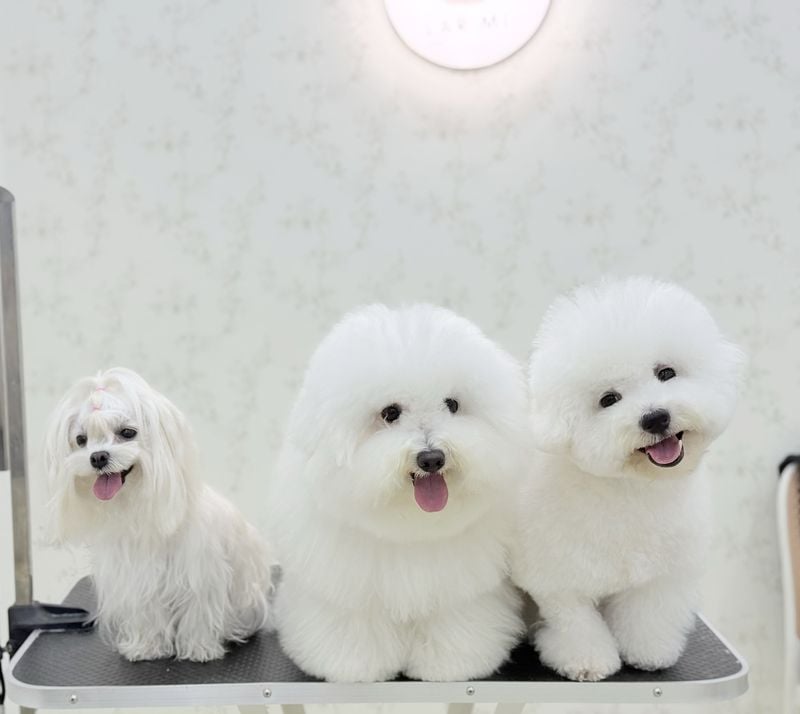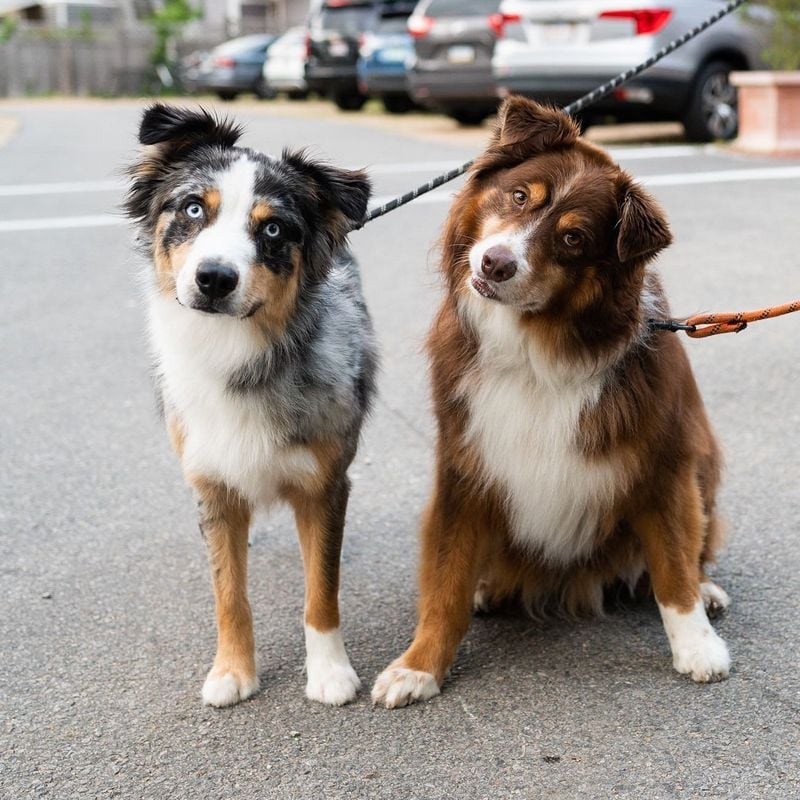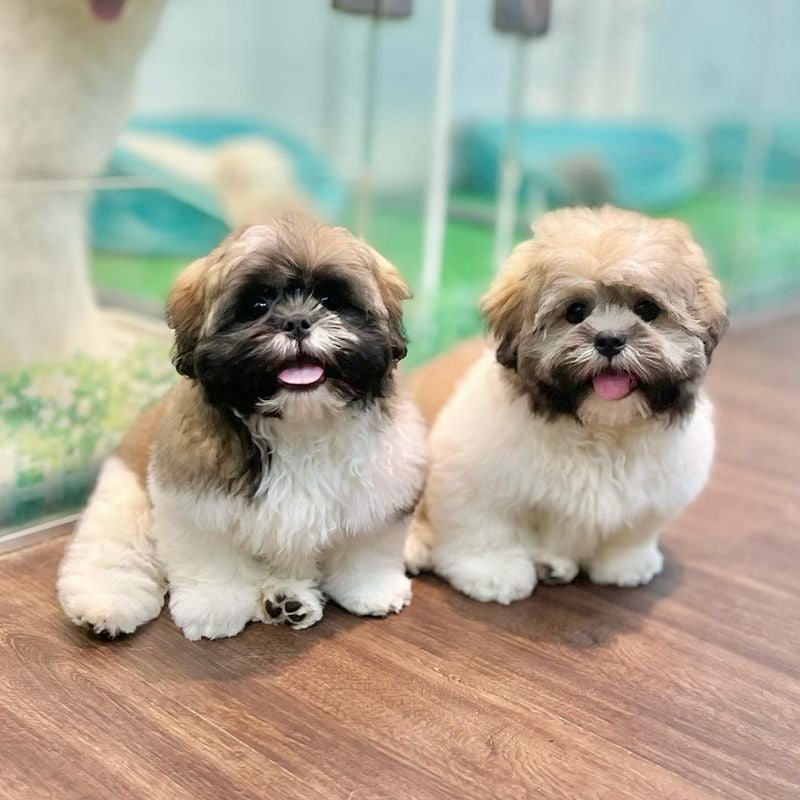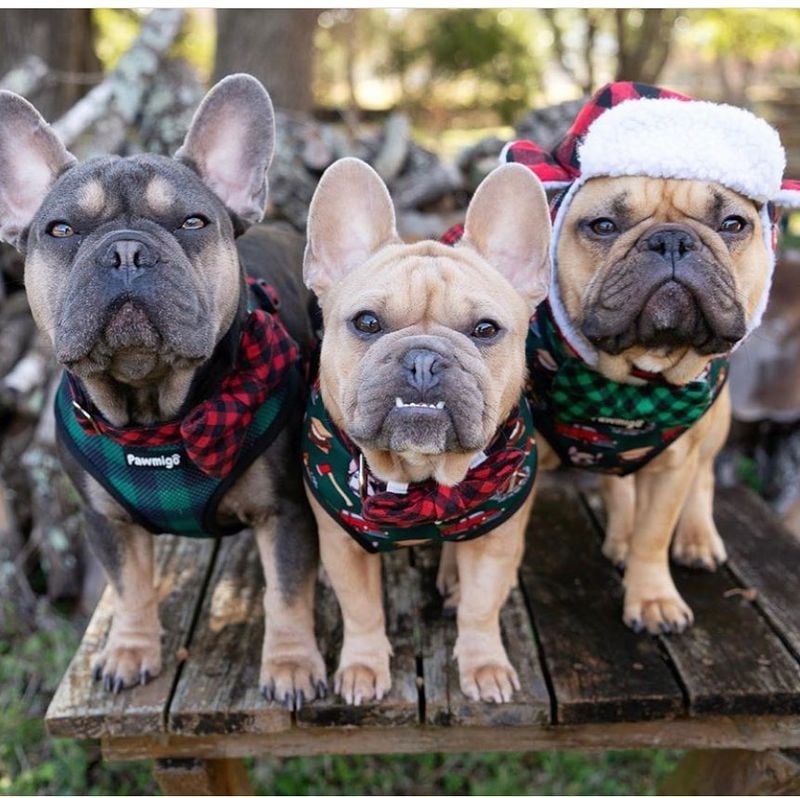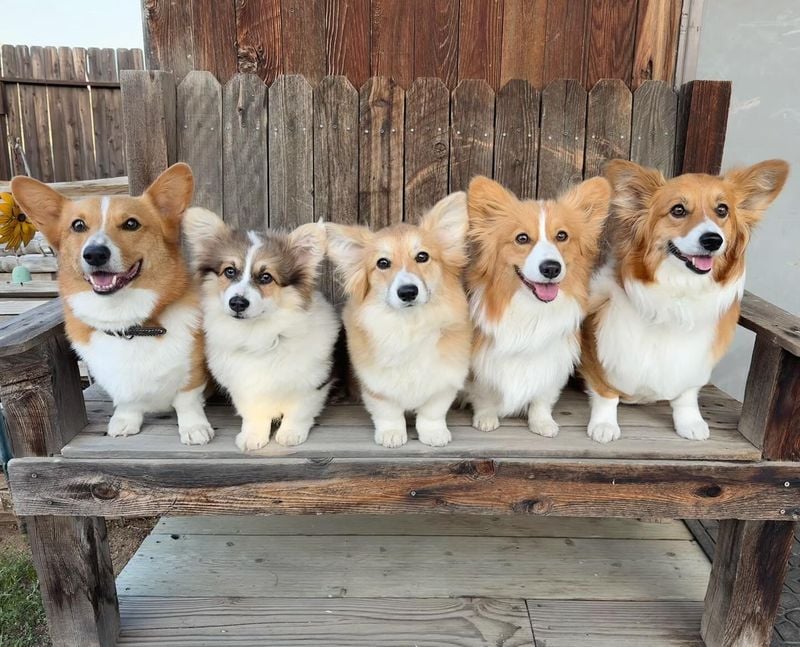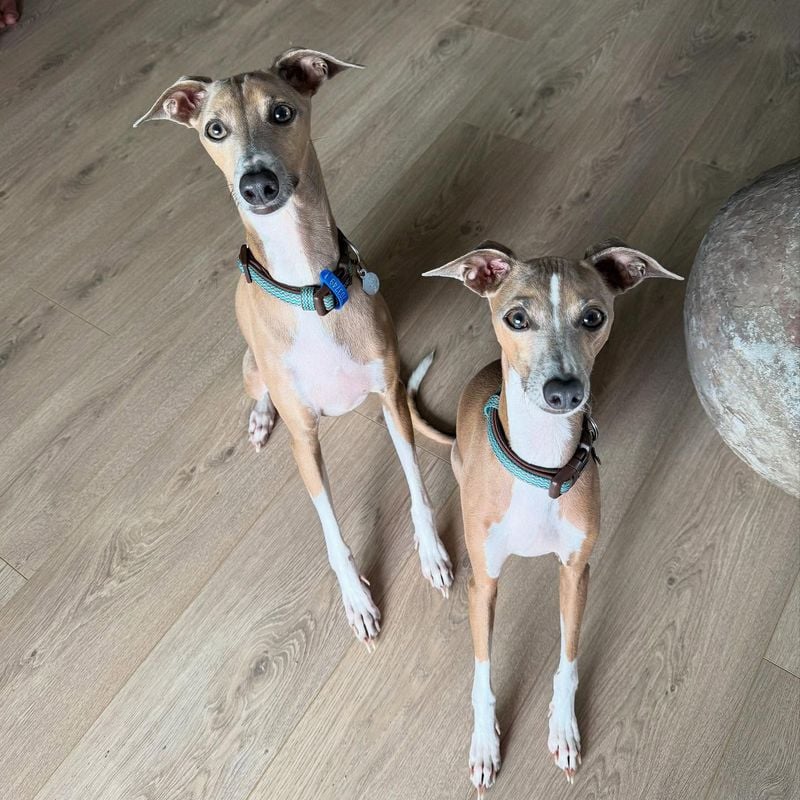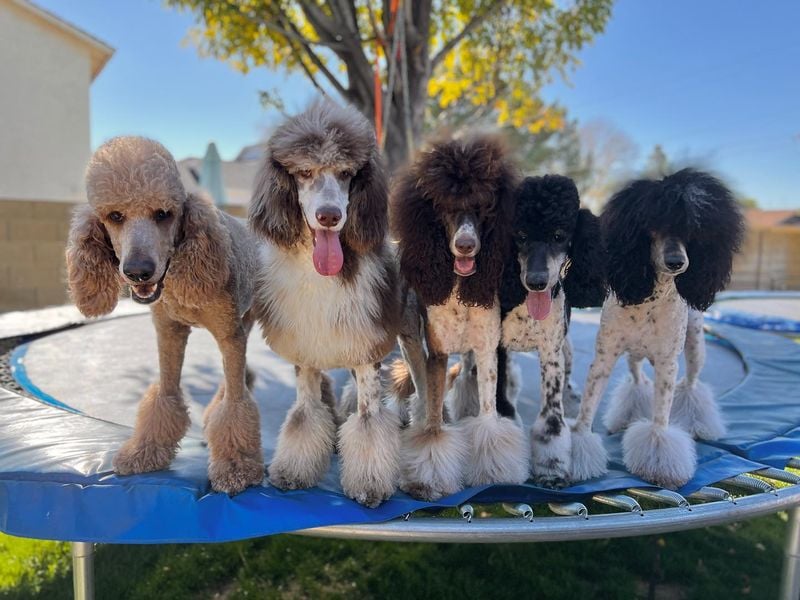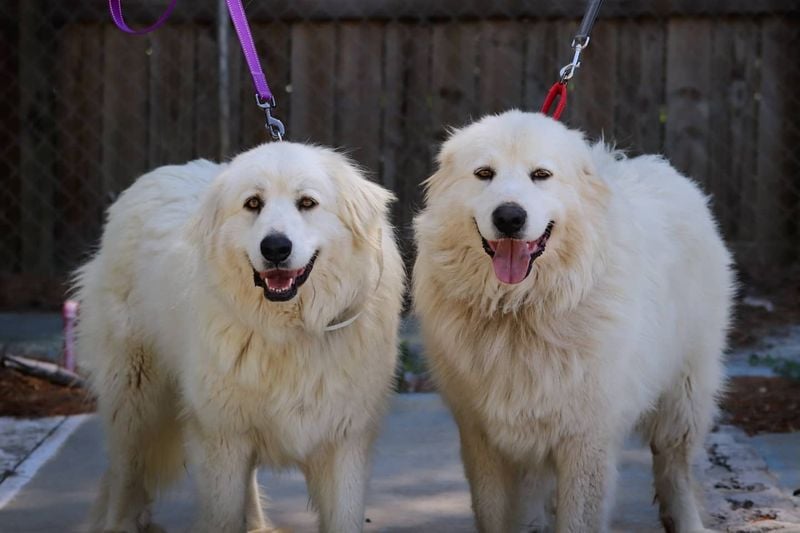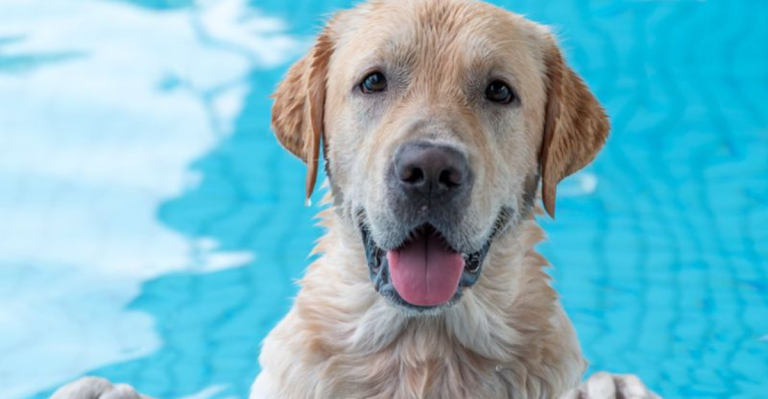These 18 Dog Breeds Are Happiest in Pairs — Because One Tail Just Isn’t Enough
Bringing a dog into your life is a joyful, life-changing experience—but for some breeds, one dog simply isn’t enough. While all dogs are social to a degree, certain breeds are hardwired to crave pack life.
Left to their own devices, these dogs may develop anxiety, destructive habits, or even depression—not because they’re “bad,” but because they’re lonely. That’s where the magic of a second dog comes in.
For these pack-oriented pooches, having a fellow canine companion isn’t just a luxury—it’s essential to their emotional health. Whether it’s chasing balls, howling in harmony, or curling up in the same bed for a nap, these dogs bond deeply with their furry siblings. They play harder, nap longer, and feel safer with a four-legged friend by their side.
Imagine coming home to not one, but two wagging tails—who’ve spent the day tiring each other out instead of chewing your shoes. It’s not chaos (well, okay, sometimes it is)—it’s companionship at its finest.
In this article, we’re spotlighting 18 dog breeds that are happiest as part of a duo. From high-energy Huskies and brainy Border Collies to snuggly Cavaliers and synchronized Bassets, these breeds don’t just tolerate other dogs—they thrive with them.
So, if you’ve ever caught your pup staring longingly at other dogs in the park, this list might just be your sign. For these dogs, life is simply better with a best friend.
1. Siberian Huskies
Descended from working sled dogs, Siberian Huskies possess an innate pack mentality that makes them crave canine companionship. When kept solo, these energetic pups often become destructive out of boredom and loneliness.
Two Huskies will entertain each other with play, satisfy their social needs, and help burn off their legendary energy reserves. Their howling conversations and synchronized zoomies around the yard are a sight to behold!
The bond between paired Huskies often resembles that of siblings, complete with playful wrestling matches and curling up together for naps, even when multiple beds are available.
2. Labrador Retrievers
Famous for their friendly demeanor, Labs actually benefit tremendously from having a buddy. Their social nature means they form strong bonds with other dogs, especially fellow Labradors who match their play style and energy level.
A pair of Labs will swim, fetch, and romp together tirelessly, preventing the destructive behaviors that can emerge when these intelligent dogs get bored. Their similar size and strength make them perfect playmates.
Many Lab owners report that having two actually creates less work—they entertain each other during the day and come home happily tired instead of bouncing off the walls from pent-up energy.
3. Beagles
Originally bred for pack hunting, Beagles have socialization hardwired into their DNA. A solitary Beagle often becomes vocal and anxious without canine companionship to fulfill their pack instincts.
Two Beagles will follow scent trails together, their tails wagging in unison as they explore the world through their powerful noses. Their synchronized baying when they spot a squirrel or rabbit is the sound of pure doggy joy!
Beagle pairs typically sleep cuddled together and develop their own communication system of subtle ear movements and expressions. Their hunting heritage makes them happiest when they can share adventures with another four-legged friend.
4. Border Collies
Ranked among the most intelligent dog breeds, Border Collies need mental stimulation as much as physical exercise. Two Border Collies create their own games, challenges, and competitions that keep their brilliant minds engaged.
Watching a pair of these working dogs is like witnessing canine chess—they anticipate each other’s moves during play and constantly invent new ways to interact. Their herding instincts are often satisfied by playfully corralling each other around the yard.
Border Collie pairs form deep bonds and can often be seen working together to solve problems, like figuring out how to open gates or retrieve toys from difficult spots. Their teamwork is truly remarkable!
5. Cavalier King Charles Spaniels
Known as “velcro dogs” for their attachment to humans, Cavaliers also adore the company of other dogs. Their gentle temperament makes them ideal companions for each other, offering comfort during times when their humans are away.
A pair of Cavaliers will often be found snuggled together on the couch or bed, their silky ears intertwined. Unlike some breeds that compete for attention, these sweet-natured dogs seem to understand there’s plenty of love to go around.
Their playful antics together tend to be gentle and polite—a charming reflection of their royal heritage. Many owners notice decreased separation anxiety when Cavaliers have a canine friend to keep them company.
6. Boxers
Boxers maintain their puppy-like enthusiasm well into adulthood, making them perpetual playmates who thrive with a buddy. Their unique play style—involving lots of bouncing, pawing, and play-bowing—is best understood by another Boxer.
Two of these energetic goofballs will entertain each other for hours with wrestling matches and silly antics. Their expressive faces and dramatic play style make them endlessly entertaining to watch as they communicate with each other.
Despite their muscular appearance, Boxers are sensitive souls who appreciate having a companion who understands their exuberant nature. Their synchronized zoomies around the yard are a testament to their joy in shared play.
7. Dachshunds
Despite their independent streak, Dachshunds are pack animals at heart. Their hunting heritage created dogs that work well in groups, following scents and chasing prey together.
A pair of Dachshunds will create elaborate tunnel systems in blankets and pillows, satisfying their burrowing instincts together. Their competitive spirit often leads to amusing races to retrieve toys or get to the food bowl first!
Many Dachshund owners report that having two helps prevent the stubborn behavior these little dogs are known for—they seem to keep each other in line. Their synchronized barking at passing delivery trucks shows their shared commitment to “protecting” their home.
8. Golden Retrievers
Few sights warm the heart like two Golden Retrievers playing together. These naturally sociable dogs form deep bonds with other canines, especially fellow Goldens who match their gentle play style and love of retrieving games.
Golden pairs often develop a synchronized swimming routine when near water—one retrieving while the other waits patiently for their turn. Their shared joy in simple pleasures like rolling in grass or carrying around treasured toys makes them perfect companions.
Most Golden owners notice their dogs seem happier and more fulfilled with a buddy. They’ll often share toys without jealousy and take turns being the leader during play, showing their cooperative nature.
9. Jack Russell Terriers
“One Jack Russell is a full-time job, two is a circus”—this common saying among owners highlights how these energetic terriers thrive with a partner in crime. Their boundless energy finds a perfect outlet in wrestling matches and chase games with another Jack Russell.
Two of these clever little dogs will invent games together, problem-solve to reach treats, and keep each other mentally stimulated. Their terrier tenacity means they’ll spend hours digging together or working as a team to flush out backyard critters.
Jack Russell pairs develop their own communication system of barks, growls, and body language that’s fascinating to observe. Their synchronized jumping ability—often reaching impressive heights in tandem—is truly a sight to behold!
10. Basset Hounds
Those droopy eyes and ears might fool you, but Basset Hounds are pack animals through and through. Historically bred to hunt in groups, they’re happiest when they have another hound to howl with.
A pair of Bassets will follow scent trails together, their noses to the ground and tails wagging slowly in concentration. Their legendary stubbornness often diminishes when they have a companion—they seem to encourage each other to listen to commands.
The hilarious sight of two Bassets flopped together on the couch, their long ears splayed out like throw blankets, brings joy to any home. Their synchronized howling when they hear sirens or music is both comical and oddly harmonious!
11. Bichon Frises
These cotton-ball fluffballs may seem like pampered lap dogs, but Bichons actually have a playful spirit that blossoms with a companion. Their gentle play style makes them perfect matches for each other.
Two Bichons will chase each other in circles, their white coats bouncing like animated snowballs around the living room. Unlike some breeds, they rarely play rough, preferring a gentle game of tag or tug-of-war that won’t mess up their pristine coats.
Bichon pairs often develop adorable routines—greeting visitors together with synchronized happy dances or begging for treats with identical head tilts. Their cheerful nature seems to double when they have a fluffy friend to share life with.
12. Australian Shepherds
Aussies have a strong herding heritage that makes them naturally inclined toward teamwork. Two Australian Shepherds will create their own jobs around the house or yard, working together to “herd” toys, children, or other pets.
Their remarkable intelligence allows them to develop complex games together that satisfy their need for mental challenges. Watching a pair of Aussies play frisbee is like witnessing a choreographed dance—they’ll take turns catching and retrieving with minimal direction.
Many owners report that Australian Shepherd pairs develop a unique communication system of subtle eye movements and body language. Their multi-colored eyes seem to light up with joy when they have a fellow Aussie to share their boundless energy with.
13. Shih Tzus
Originally bred as palace companions in ancient China, Shih Tzus carry themselves with regal dignity—until playtime begins! These little lions become surprisingly playful with fellow Shih Tzus who understand their unique play style.
A pair of these imperial pups will often be found grooming each other, maintaining those luxurious coats with mutual care. Their play sessions tend to be short but enthusiastic bursts followed by synchronized napping on the nearest soft surface.
Shih Tzu duos develop charming habits like sitting together at the window to watch the neighborhood or greeting visitors with a harmonized chorus of yappy barks. Their shared disdain for rainy weather (which ruins a good hairdo) is often apparent!
14. French Bulldogs
Those adorable bat ears perk up with excitement when Frenchies have a buddy to play with! Despite their somewhat stubborn nature, French Bulldogs are surprisingly social and form strong bonds with other dogs, especially fellow flat-faced friends.
Two Frenchies will entertain themselves with wrestling matches and chase games, their compact bodies bouncing around like furry potatoes. Their unique vocalizations—a mix of grunts, snorts, and yips—seem to form a special language between them.
French Bulldog pairs often sleep in hilarious positions together, their stocky bodies sprawled out in synchronized snoring sessions. Many owners report their Frenchies’ infamous stubbornness decreases when they have a partner who encourages them to follow commands.
15. Corgis
Don’t let those stubby legs fool you—Corgis are working dogs with herding in their blood! Their pack mentality makes them naturally inclined to enjoy the company of another dog, especially a fellow Corgi who matches their unique body type and play style.
A Corgi duo will race around the yard with surprising speed, their bread-loaf bodies and expressive faces showing pure joy in shared play. Their herding instincts often emerge as they work together to corral toys or even herd their humans toward the treat cabinet!
The sight of two Corgis sploot-ing (laying flat with legs extended behind them) side by side is guaranteed to melt any heart. Their matching fox-like grins and synchronized tail wags create double the charm in any household.
16. Greyhounds
Former racing Greyhounds especially benefit from having another sighthound companion who understands their unique play style and energy bursts. Their shared background creates an instant bond that helps retired racers adjust to home life.
Two Greyhounds will engage in spectacular “zoomie” sessions together, reaching incredible speeds as they chase each other in wide circles. These brief energy explosions are typically followed by marathon napping sessions—Greyhounds are famous for being “45mph couch potatoes.”
Greyhound pairs often sleep curled together in tight balls despite their lanky frames. Many adopters report that shy or anxious Greyhounds blossom with confidence when they have another hound showing them how to be a pet.
17. Poodles
Behind those fancy haircuts are some of the smartest dogs in the world! Poodles thrive with mental stimulation, and having another intelligent Poodle to interact with provides constant cognitive challenges.
Standard Poodles particularly enjoy having a playmate who matches their energy and can keep up with their athletic abilities. Their play involves impressive leaps, quick direction changes, and clever strategy—almost like watching canine chess masters!
Miniature and Toy Poodles form especially tight bonds with fellow small Poodles, often developing elaborate games together. The precision with which a Poodle pair can perform synchronized behaviors, like simultaneously bringing toys or responding to commands, showcases their remarkable intelligence.
18. Great Pyrenees
These majestic white giants were bred to guard livestock in pairs or groups, making them naturally inclined toward cooperative work with other dogs. Their guardian instincts are satisfied when they have a partner to help “protect” their family and territory.
Two Pyrenees will patrol property boundaries together, establishing a tag-team surveillance system that makes them feel fulfilled. Despite their imposing size, they play together with surprising gentleness, using soft mouths and careful body movements.
Pyrenees pairs often develop a “good cop/bad cop” dynamic—one greeting visitors warmly while the other remains watchful and reserved. Their synchronized barking at potential threats (like the mail carrier) shows their shared commitment to their guardian role.

